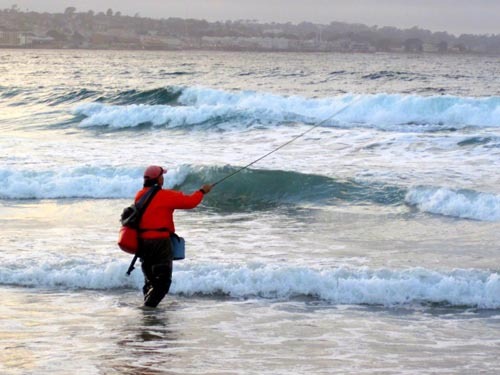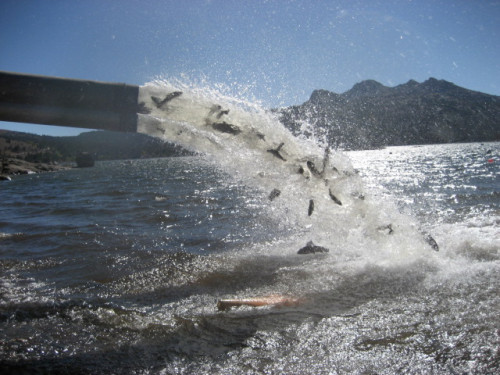Long Range Fish Report
From Sportfishing
From Sportfishing
Fish Report for 2-18-2016
Wildlife came with the property, so leave them alone
2-18-2016
Carrie Wilson
Question: My neighbor has lake front property and regularly chases away (or throws sticks and pine cones at) Canada geese during the nesting season. His intent is to keep them off his dock, but he extends his harassment about one-tenth of a mile up the beach on several others’ private ground and PG&E property. Is this legal? I figure the wildlife came with the property location and should be left alone. Love my neighbor but hate his treatment of our local geese. (Anonymous)
Answer: Your neighbor is within his rights to haze geese from his property. Canada geese are state and federally protected under laws and regulations within the Migratory Bird Treaty Act and California Fish and Game Code. However, within those regulations, non-lethal hazing methods, such as harassment as done by this individual, are allowed to deter Canada geese from privately-owned property where property damage or a nuisance may occur to the landowner.
Resident Canada goose populations have increased considerably since the 1990s in California. In this time, Canada geese have expanded outside their historical nesting range. Due to this increase, conflicts between landowners and resident Canada geese have expanded in many counties in California. Your neighbor is allowed to scare resident geese away from his property with non-lethal means at any time. CDFW advocates that landowners take proactive non-lethal measures to reduce Canada goose use on impacted private property. Possible suggestions for hazing geese away from properties during the breeding season include landscape modification to make the area less attractive to resident geese (e.g. keep grass short to discourage feeding), use of dogs, visual deterrents, such as scarecrows, predator decoys, mylar flagging and balloons, and fencing. Additionally, waterfowl hunting can be an effective deterrent in problem areas outside the breeding season when state and local regulations allow this activity.
For additional questions regarding how private landowners can best control problem Canada geese, please contact CDFW’s Waterfowl Program staff at (916) 445-0411.
Answer: Your neighbor is within his rights to haze geese from his property. Canada geese are state and federally protected under laws and regulations within the Migratory Bird Treaty Act and California Fish and Game Code. However, within those regulations, non-lethal hazing methods, such as harassment as done by this individual, are allowed to deter Canada geese from privately-owned property where property damage or a nuisance may occur to the landowner.
Resident Canada goose populations have increased considerably since the 1990s in California. In this time, Canada geese have expanded outside their historical nesting range. Due to this increase, conflicts between landowners and resident Canada geese have expanded in many counties in California. Your neighbor is allowed to scare resident geese away from his property with non-lethal means at any time. CDFW advocates that landowners take proactive non-lethal measures to reduce Canada goose use on impacted private property. Possible suggestions for hazing geese away from properties during the breeding season include landscape modification to make the area less attractive to resident geese (e.g. keep grass short to discourage feeding), use of dogs, visual deterrents, such as scarecrows, predator decoys, mylar flagging and balloons, and fencing. Additionally, waterfowl hunting can be an effective deterrent in problem areas outside the breeding season when state and local regulations allow this activity.
For additional questions regarding how private landowners can best control problem Canada geese, please contact CDFW’s Waterfowl Program staff at (916) 445-0411.
Carrie Wilson is a marine environmental scientist with the California Department of Fish and Wildlife. While she cannot personally answer everyone’s questions, she will select a few to answer each week in this column. Please contact her at CalOutdoors@wildlife.ca.gov.
< Previous Report Next Report >
More Reports

2-18-2016
Question: My girlfriend and I were recently surf fishing on a local beach when some other “fishermen” showed up demanding...... Read More

2-18-2016
The CDFW has posted it's trout planting schedule for the week of February 14, 2016. Alameda County - Shadow Cliff Lake Contra...... Read More

LongRangeSportfishing.net © 2025. All Rights Reserved.
Website Hosting and Design provided by TECK.net
Website Hosting and Design provided by TECK.net